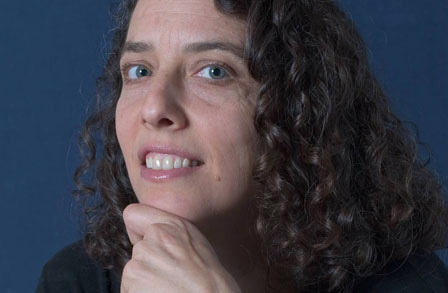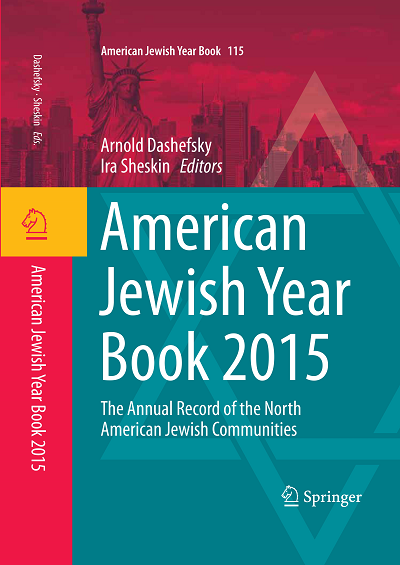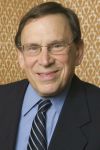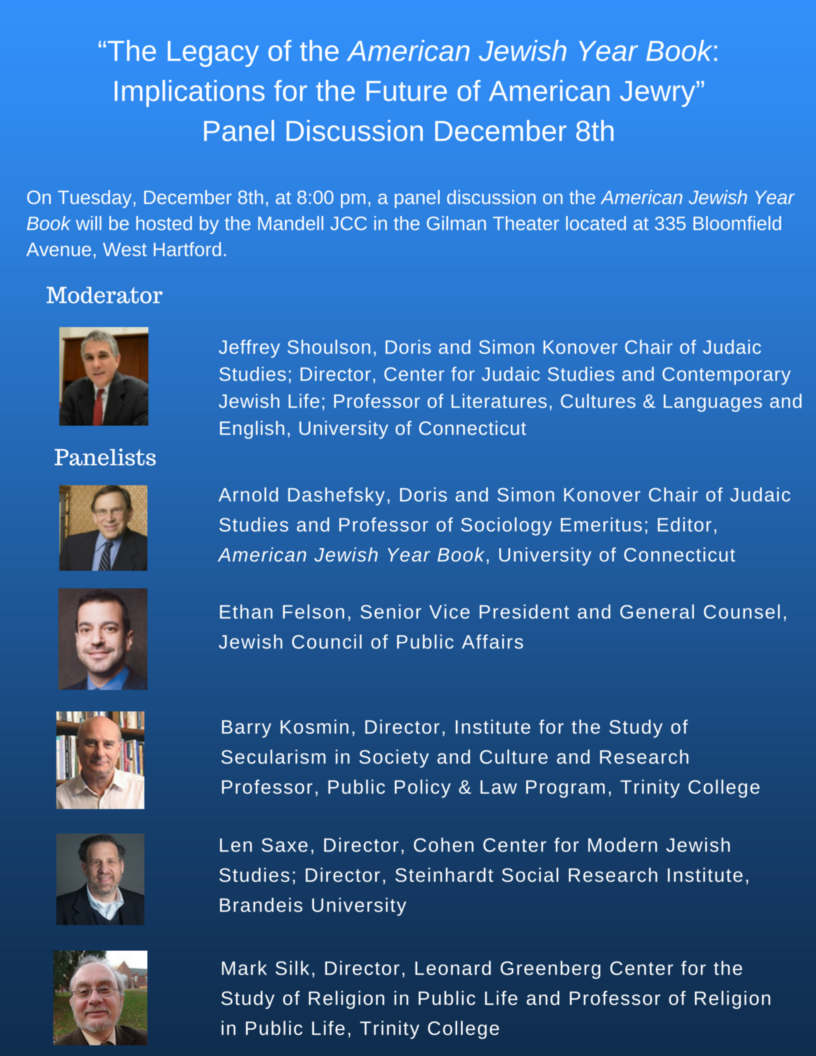Month: November 2015
Poetry Reading with Jacqueline Osherow | Nov. 11, 2015
Along with UConn Creative Writing, the Center is co-sponsoring a poetry reading on Wednesday, November 11 at 6:00 PM, at the UConn Co-Op Bookstore in Storrs Center.
 Jacqueline Osherow received her BA from Radcliffe College, Harvard University, and her PhD from Princeton University. She is the author of several collections of poetry, including “Hoopoe’s Crown” (2005). Her debut collection, “Looking for Angels in New York” (1988), was chosen for the Contemporary Poetry Series. She has been awarded the Witter Bynner Prize by the American Academy and Institute of Arts and Letters, several prizes from the Poetry Society of America, and fellowships from the Guggenheim Foundation, the National Endowment for the Arts, and the Ingram Merrill Foundation. She is a Distinguished Professor of English at the University of Utah, where she directs the Creative Writing Program.
Jacqueline Osherow received her BA from Radcliffe College, Harvard University, and her PhD from Princeton University. She is the author of several collections of poetry, including “Hoopoe’s Crown” (2005). Her debut collection, “Looking for Angels in New York” (1988), was chosen for the Contemporary Poetry Series. She has been awarded the Witter Bynner Prize by the American Academy and Institute of Arts and Letters, several prizes from the Poetry Society of America, and fellowships from the Guggenheim Foundation, the National Endowment for the Arts, and the Ingram Merrill Foundation. She is a Distinguished Professor of English at the University of Utah, where she directs the Creative Writing Program.
Daily Campus – “New course on Holocaust aims to ‘represent the unimaginable’ through film, theater”
The Daily Campus, UConn’s daily newspaper, published an article on October 29, 2015 detailing one of the new courses offered by the Center for Judaic Studies.
From the article:
“The course will examine how the Holocaust has been represented, and the difficulties associated with trying to portray the event successfully, Sibelman said. Students will look at written and filmed works, such as first-hand accounts, dramatic works and documentaries that successfully capture elements of the Holocaust.”
To read the article on The Daily Campus website, click here.
Upcoming Release of the American Jewish Year Book 2015 Includes New Population Study Data
The 2015 volume of the American Jewish Year Book, produced by Springer and supported by the Center for Judaic Studies and Contemporary Jewish Life at the University of Connecticut and the Center for Contemporary Judaic Studies at the University of Miami, will be released in the coming weeks. Included in the Year Book are the regular chapters on US and world Jewish population stat istics, this year with some surprising findings. Of note, Sergio DellaPergola, in reporting on his world Jewish population studies, argues that Israel’s Jewish population has outnumbered that of the United States, the largest Diaspora community. DellaPergola argues that Israel’s rapid Jewish population growth has overtaken the US’s more stable growth and estimates that Israel’s Jewish population has reached 6.2 million and the US population 5.7 million. However, as DellaPergola points out, “Israel’s Jewish population faces a significant demographic challenge with its gradually diminishing majority status vis-á-vis the Palestinian Arab population who live within the boundaries of the State of Israel as well as on the whole territory between the Mediterranean Sea and the Jordan River.” In fact, according to DellaPergola, the enlarged Jewish population represents a bare majority (52.1 %) of the total population living between the Mediterranean Sea and the Jordan River.
istics, this year with some surprising findings. Of note, Sergio DellaPergola, in reporting on his world Jewish population studies, argues that Israel’s Jewish population has outnumbered that of the United States, the largest Diaspora community. DellaPergola argues that Israel’s rapid Jewish population growth has overtaken the US’s more stable growth and estimates that Israel’s Jewish population has reached 6.2 million and the US population 5.7 million. However, as DellaPergola points out, “Israel’s Jewish population faces a significant demographic challenge with its gradually diminishing majority status vis-á-vis the Palestinian Arab population who live within the boundaries of the State of Israel as well as on the whole territory between the Mediterranean Sea and the Jordan River.” In fact, according to DellaPergola, the enlarged Jewish population represents a bare majority (52.1 %) of the total population living between the Mediterranean Sea and the Jordan River.
Other estimates of the Jewish population in the United States are higher, including that of Ira Sheskin and Arnold Dashefsky who, in this issue of the Year Book, estimate the figure to be closer to 6.8 million. In the chapter on US Jewish Population, Sheskin and Dashefsky examine the May 2015 Pew Study, America’s Changing Religious Landscape, which, in contrast to scholarly opinion that the US Jewish population is not increasing, reports that the adult Jewish population has increased from 1.7 to 1.9 % from 2007 to 2014. According to Sheskin and Dashefsky, “while the increase in the proportion of adult Jews from 2007 to 2014 was not statistically significant, it does suggest the likelihood of stability in the Jewish share of the adult population of the US.”
The research findings of population studies reported in the Year Book have broader implications in terms of policy and Jewish community planning. One thing that can be agreed upon, is that due to Israel’s higher fertility rates, younger Jewish population, and increased immigration, the population in Israel will continue to increase while the US Jewis h population is expected to remain more stable due to higher intermarriage rates and an aging population.
h population is expected to remain more stable due to higher intermarriage rates and an aging population.
The Year Book, since 1899 with a brief interruption from 2008-2012, has served educators, scholars, lay leaders, and members of the Jewish community as an inestimable resource. Featuring both chapters from eminent scholars on North American Jewish life as well as extensive lists detailing the numerous North American Jewish institutions, periodicals, academic resources, and major events, the Year Book preserves an invaluable annual record of Jewish life.
Regular articles on National Affairs by Ethan Felson, joined this year by Mark Silk, and Jewish Communal Affairs by Lawrence Grossman summarize and relate yearly events. Topical articles specific to this issue include Steven Gold’s chapter on adaptation patterns of US Jewish immigrants while Annette Koren, Leonard Saxe, and Eric Fleisch examine Jewish campus life. Population studies for the United States, World Jewry, and Canada are provided by Ira Sheskin and Arnold Dashefsky, Sergio DellaPergola, and Charles Shahar, respectively.
Call for Papers – Brown Religious Studies Graduate Student Conference
This conference seeks to explore and bridge the surprising gap between “genealogy” and “family” in the study of
religion. Developments in contemporary scholarship include elaborations and critiques of genealogy, new approaches to the identification and mapping of known genealogies (including digital and graphic representations), and a growing interest in the ritual and narrative construction of lineages.
Simultaneously, increased attention has been given to the materiality of religion practiced in the home and the role
of the family as a locus for individual and communal formation. Conversations about genealogy and family often
appear disengaged from one another and can become embedded in problematic dichotomies. Genealogy implies patrilineal descent, while “domestic religion” is often used synonymously with “women’s religion.” Similarly, genealogy is associated with science, history, and rationality; family with emotion, daily life, and nature. Why have “family” and “genealogy” been bifurcated in religious studies? What can we learn from bringing them back together?
By approaching these topics in tandem, we hope to engender critical reflection about the subtle relationships between “families” and “genealogies,” and to interrogate the prevailing split that seems to separate the two. We welcome papers on the topics listed below, as well as contributions on related issues. Papers might approach these topics through a variety of theoretical lenses: affect theory, feminist and queer theory, spatial theory, materialist approaches, political theory, theology, critical race theory, ethics, etc.
